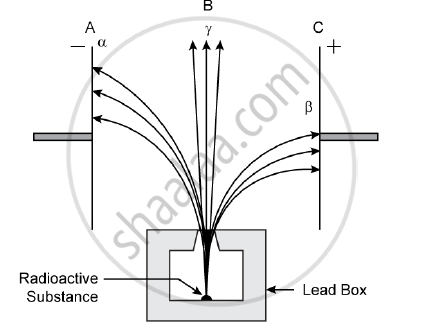Advertisements
Advertisements
प्रश्न
Radiations given out from a source when subjected to an electric field in a direction perpendicular to their path are shown below in the diagram. The arrows show the path of the radiation A, B and C. Answer the following questions in terms of A, B and C.

1) Name the radiation B which is unaffected by the electrostatic field.
2) Why does the radiation C deflect more than A?
3) Which among the three causes the least biological damage externally.
4) Name the radiation which is used in carbon dating.
उत्तर
1) Gamma radiations
2) Because of the mass of B particle is less than that of α, hence radiation deflects more than A.
3) `gamma` rays
4) beta radiation `""_6^14C -> ""_7^14N + ""_(-1)^0beta^(-)`
APPEARS IN
संबंधित प्रश्न
Name the unit in which the work function of a metal is expressed.
When is said to be the nucleus unstable?
A nucleus is \[\ce{^24_11 Na}\] β-radioactive.
Write the equation represent β-decay.
During the emission of a beta particle, the ______ number remains same.
Define mass number of an element.
What are the types of emission?
What are cathode rays? Why are they called ‘cathode rays’? Name a material which exhibits fluorescence when cathode rays fall on it.
In a cathode ray tube state the purpose of the fluorescent screen.
Are all the radiations viz. α, β and γ emitted in a single radioactive decay?
From α, β and γ-rays, name the one which is not affected by electric or magnetic field?
